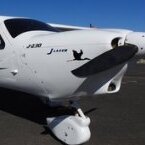-
Posts
3,464 -
Joined
-
Last visited
-
Days Won
47

RFguy replied to onetrack's topic in Aircraft Incidents and Accidents

RFguy replied to onetrack's topic in Aircraft Incidents and Accidents

RFguy replied to onetrack's topic in Aircraft Incidents and Accidents

RFguy replied to onetrack's topic in Aircraft Incidents and Accidents

RFguy replied to danny_galaga's topic in Instruments, Radios and Electronics

RFguy replied to Thruster88's topic in Aircraft Incidents and Accidents

RFguy replied to Thruster88's topic in Aircraft Incidents and Accidents

RFguy replied to Thruster88's topic in Aircraft Incidents and Accidents

RFguy replied to trailer's topic in Student Pilot & Further Learning

RFguy replied to Thruster88's topic in Aircraft Incidents and Accidents

RFguy replied to RFguy's topic in Engines and Props

RFguy replied to RFguy's topic in Engines and Props

RFguy replied to danny_galaga's topic in Instruments, Radios and Electronics

RFguy replied to RFguy's topic in Engines and Props

